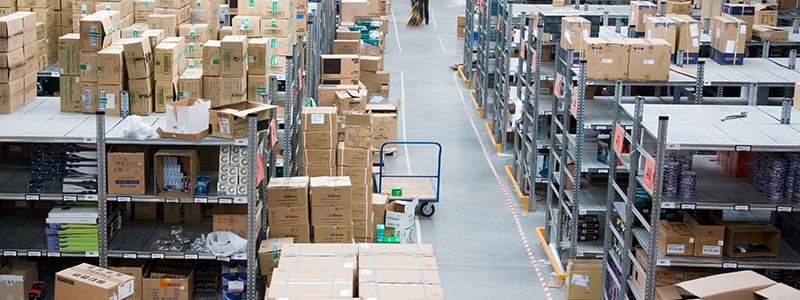
When the marketing department is making packaging decisions, it seldom considers storage in the design. After all, they are looking for a cost efficient, eye-grabbing, attention-getting, highly saleable way to package a product that showcases its features and benefits. The end goal is to make the consumer think “Hey! I need that!” and purchase it.
For warehouse managers concerned with maximizing space, maintaining a FIFO or LIFO inventory cycle, picking productivity and unloading/unloading operations, packaging can be a very big deal as well, only for different reasons. Warehouse managers determine how to fit all the inventory in the space allotted, in the most efficient manner possible, and still maintain a high level of productivity and worker safety.
How an item is packaged individually influences how it is packaged in bulk. Ideally, bulk packaging will result in the size of a typical pallet – 48” by 40” – that will store easily in the warehouse. When using traditional shelving, dimensions of stored product can vary a bit, but when using pallet systems such as push-back or drive-in, which are configured for a specific size pallet, there can be no deviation without serious waste of storage space.
When a product is being developed, or considered to be purchased for a product offering, be sure to think about storage, inventory and warehouse capability in the decision. There is nothing worse than excitement over a new offering, only to discover it doesn’t fit on the shelves, has to be stored in aisles or corners, or the warehouse cannot hold enough stock to meet orders in a timely manner.
Likewise, when contemplating redesigning warehouse space and use of its three-dimensional footprint, think about how the current inventory is packaged. If you have storing lumber on traditional shelving, would cantilever racking make more sense? If so, could that product be stored outside instead of inside? Cantilever racking works wonderful for odd-dimensioned items, with adjustable arms and the capability of storing up and not out.
Do you have pallet positions taken up by small items in bins? Maybe wall mounted shelving or selective pallet rack solutions make more sense. These can hold multiple small items in baskets or bins, even on hooks, with assigned locations that make accessibility and inventory easy.
For inventory that is palletized, and moves in and out of the warehouse as pallets, drive-in and push-back racks use gravity to keep inventory cycling through according to the FIFO or LIFO cycle in place, always ensuring the right product moves out the door first. Using natural forces such as gravity, and requiring only end access points, such racking means rows are closer together, making use of the space normally occupied by travelling material handling equipment such as forklifts or pallet jacks.
All of those decisions begin with packaging. While the warehouse is concerned in bulk, it should still be on the mind of decision makers on each individual piece. This way, from conception, through production and ending in the final ship to sale, the process is efficient, smooth and seamless for every single person along the way.


.png)



